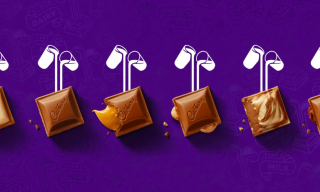Think you’ve read them all? Here’s a short list of required reading from our very own branding geeks.
You know, you can learn from making a thousand mistakes or you can quick-track the process and learn from someone who’s already made those mistakes, thousands of times. When it comes to geeking out on branding, there really is a lot to consider (besides your Wally Ollins vintage action figure collection or your “brand why” golden circle dartboard). That’s why we’ve pulled a short stack of top branding titles right off the ‘ol MadeBrave bookshelf.
1. “The Brand Handbook” by Wally Ollins
Brands. Lots of people talk it and few know it. Brand is often draped in buzzwords and marketing jargon, but in his trademark straightforward style Wally explains what brands are, and how to create and sustain them. By reaching the end of the book it’ll answer the question of ‘why all the fuss’? Ollins claims it’s getting confused and confusing, and really doesn’t need to be. The Brand Handbook is an easy quick-reference guide and always good to have at hand to simplify an increasingly complicated process.
2. “Branding in Five and a Half Steps” by Michael Johnson
“It’s your choice. You could devour a pile of books on brand strategy, and then another pile on design and communication. Great books in their own right, but they are in two quite separate camps…”
Branding is moving so fast that Michael Johnson attempts to slow down and examine how on Earth we got to where we are, from humble brand days of marking cattle with a scorching iron. Time to agree on a few ground rules going forward and explode some myths while he’s at it. This really is a bit-by-bit, linear and easily digestible read. The half-step in this book is the gap that we’ve all been looking to bridge between strategy – as Michael states, sometimes cruelly called ‘suits’, and the design – owned by those prickly, unpredictable, creative types wearing difficult glasses.
3. “The Brand Gap” by Marty Neumeier
Talking of bridging gaps, best to understand that problem before hammering out solutions, right? Marty Neumeier goes into a clinical breakdown of what the gap is. The brand is not the logo, it’s not the visual style, it’s not a list of values. What the hell is it? This book flips branding on its head by defining that a brand is a person’s gut feeling because brands are defined by individuals – not companies, markets or publics. Sit down with Marty and dig into our human, emotional intuition and how to tap into that as a company. In short—your brand is not what you say it is, it’s what other people say it is.
4. “The Tipping Point” by Malcolm Gladwell
The first three books will show there is a huge social aspect of brands as connectors, with aesthetics as the other side of the coin. The ultimate goal is to fit with an audience and say particular things to a particular group with a sense of authenticity. Thousands of brand solutions are churned out while only lightly brushing on this. But what’s the science behind brands with incredible traction? The ‘tipping point’ still remains an elusive idea but Gladwell offers some common ground for trending as a brand – published back in 2000 before ‘trending’ was a thing!
5. “Whatever You Think, Think The Opposite” by Paul Arden
“A little-known athlete approached the bar, which was set at a high-jump world-record height of 7ft 4in. He took off, but instead of turning his body towards the bar, he turned his back on it. He brought his legs up and flipped over the bar backwards. His name was Dick Fosbury, and his method of jumping became known as the Fosbury Flop. It’s still used. He jumped higher than anyone before, by thinking the opposite. The technique for thinking become a technique for jumping, turning a flop into a success.”
Not strictly a book on branding, but hey, who doesn’t want a string of methods for generating strong and original ideas? As the other books on this list attest, the branding process can be a tricky one with a lot of subjective barriers. There are going to be moments when you need to navigate the process of bringing ideas to life. This is a Gospel book for the doers, makers and artists on the front-line of having ideas. Most importantly it gives ideas tangible value by making them happen. Paul Arden offers lots of inspirational routes on how to come out on top of the creative fist-fight.








